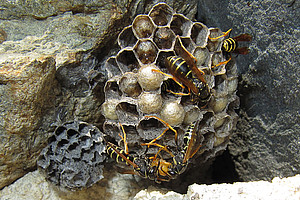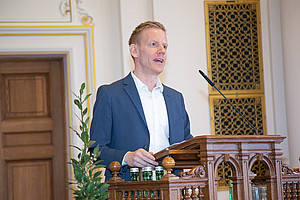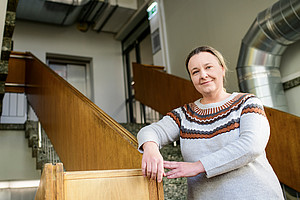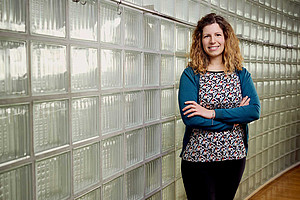The car industry needs to improve its green credentials. There’s no getting around that. Key factors for the development of vehicle concepts for the future include not only the search for alternative fuels and drive systems, but also the use of more sustainable materials. “WoodC.A.R. – computer aided research” is a collaborative project in which researchers at various Austrian universities and research institutes are working with company partners to explore options for the use of wood in vehicle manufacturing. This is about much more than elegant styling for vehicle interiors – they are also working on developing loadbearing structures made of wood. They have already applied for a patent for a side impact bar made entirely from wood composite and natural materials. At the Institute of Systems Sciences, Innovation and Sustainability Research (SIS) at the University of Graz, Tobias Stern and his team are assisting with the development of prototypes by providing analyses of ecological and social sustainability and of the effects on the regional economy and employment market. This COMET project is coordinated by the Innovation Centre W.E.I.Z. and the University of Natural Resources and Life Sciences (BOKU), Vienna. It is financed by the Austrian Research Promotion Agency (FFG) and the federal states of Styria and Tyrol.
“The use of wood in automotive engineering could make a crucial difference to the future of European car manufacturing,” explains Tobias Stern. Professor Stern is an innovation researcher with a particular interest in the bioeconomy. According to the findings of his research group, “If the European car industry sourced even one per cent of its components from companies in the ‘wood and wood products’ sector instead of the ‘base metals and metal products’ sector, that would generate one to two million more hours’ work per year across the 27 countries of the EU, creating approximately 6,000 to 7,000 jobs.” And from the perspective of sustainability, there would be gains in using wood too: “If one per cent of steel-based components were replaced with wood-based components, that would save around 140,000 tonnes of greenhouse gas emissions globally every year, measured in CO2 equivalents, and around 990,000 tonnes of fossil and mineral raw materials. Use of biomass would increase by around 590,000 tonnes per year, with the greatest increase – 380,000 tonnes – being in the EU,” explains Stern.
Wood is a high performance material, if you know how to treat it and use it. To meet the required specifications for vehicles, for example with regard to resilience and durability, it is used in the form of composites, together with adhesives, synthetic materials, metals and other renewable materials. Pioneering work is being done by a team of experts led by Dr. Ulrich Müller in the Institute for Wood Science and Technology at the University of Natural Resources and Life Sciences (BOKU) in Vienna and Tulln. “It is important that the use of wood does not make the car any heavier. This would have an immediate negative impact on the environmental footprint,” explains Claudia Mair. She is writing a doctoral thesis on the subject in the context of this research project.
Another major challenge is to calculate how wood reacts in different situations, for example in the event of a collision. This is being researched by experts at the VIRTUAL VEHICLE Research Center together with colleagues at the Vehicle Safety Institute (VSI) at Graz University of Technology. Their simulations allow prototypes to be built, which are then tested and constantly improved until they meet all the specifications.
The best wood for automotive engineering is generally deciduous hardwood. This is also preferable for both environmental and economic reasons since it does not have to be imported from overseas. Stern has no misgivings that this might endanger our forests: “In Europe the total area of forest is growing, and because of ongoing climate change, the forestry industry in this region will shift increasingly to deciduous hardwoods. WoodC.A.R. aims to integrate wood into entirely new areas of value creation – a significant initiative for research activities in the important area of the bioeconomy.”
>> more information on the project “WoodC.A.R. – Computer Aided Research”




